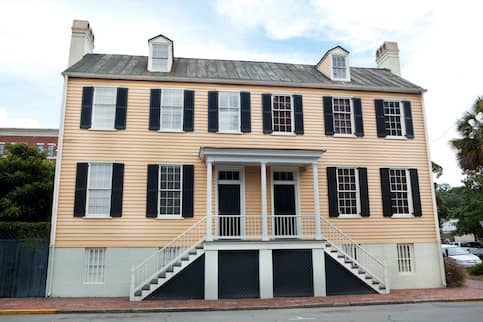If you own a manufactured home – also known as a mobile home – you might be wondering if you can qualify for a home equity loan or line of credit. The answer is yes, but there are requirements specific to borrowing equity on a manufactured home, such as a higher minimum credit score and the home’s age. Read on to learn more about getting a home equity loan on a mobile home.
Key Takeaways:
- Lenders offering home equity loans for manufactured homes often have higher financial standards for borrowers than for loans on traditional homes.
- Your manufactured home will need to be HUD certified, and you likely will need to own the land it occupies.
- Finding a lender that offers home equity loans or HELOCs for manufactured homes may be more challenging.
1. Meet Home Equity Loan Requirements
Both you and your manufactured home must meet specific requirements to get a home equity loan.
Property Requirements
Because manufactured homes differ from single-family houses, condominiums or townhouses, the requirements for equity loans for manufactured homes also differ.
“Lenders will commonly stipulate that the home be a double-wide or larger and be built after 1976,” says Rose Krieger, a Senior Home Loan Specialist at Churchill Mortgage in Spokane, Washington.
Why must it be built after 1976? That’s when the U.S. Department of Housing and Urban Development began enforcing the National Manufactured Housing Construction and Safety Standards Act of 1974, which introduced stricter construction and safety requirements.
Most lenders offering manufactured home equity loans also insist that the home has been moved only from the dealership to its current foundation, Krieger says. Lenders worry that the home’s structural integrity could be compromised if it has been moved more than once, she says.
The home’s title also must have been eliminated. “Title elimination on a manufactured home just means that now the title to the home also includes the land that the home is on,” Krieger says.
In other words, the borrower has to own the underlying land and the foundation. The wheels, axles and towing hitch used to move the home must have been removed.
Homeowner Requirements
In addition to the lender requirements for your manufactured home, the borrower must meet financial requirements.
- Maximum debt-to-income ratio: Your DTI ratio shows how much of your gross monthly income is required to pay your debts. This can be as high as 45% to 50% for some lenders, but many will want it under 40%, Krieger says.
- Minimum credit score: Because manufactured home loans are riskier, lenders may require a higher credit score. While some lenders will accept a score as low as 620, most want to see 660 or even 700 and higher, Krieger says.
- Maximum loan-to-value ratio: The LTV ratio compares your loan amount to your manufactured home’s value. Depending on the type of loan you want, this can be as high as 80% to 90%, Krieger says. If you have a first mortgage or are seeking a home equity line of credit, expect this number to be lower.
2. Gather Proper Documentation
Your lender will require you to submit specific financial documents to process your loan. Gathering those documents in advance can avoid delaying the process. Here’s what you will typically need for a home equity loan on a manufactured home:
- A HUD certification label that confirms that your home meets HUD’s Manufactured Home Construction and Safety Standards.
- Proof that your manufactured home was built after 1976. The certification label is usually sufficient.
- Proof of title to the land the home sits on.
- W-2s, 1099s, pay stubs and income tax returns.
- Bank statements.
What’s Your Goal?
Buy A Home
Discover mortgage options that fit your unique financial needs.

Refinance
Refinance your mortgage to have more money for what matters.
Tap Into Equity
Use your home’s equity and unlock cash to achieve your goals.
3. Decide Between A Home Equity Loan Or A HELOC
You can borrow your home equity with either a home equity loan or a HELOC. Choosing the right one for you depends on your financial situation and goals.
Home Equity Loan
A home equity loan is delivered in a lump sum payment, which fits best if you know how much you need to borrow and plan to spend it quickly. Home equity loans also usually have a fixed interest rate, which makes the payments on your loan predictable.
HELOC
With a HELOC, you borrow money as you need it up to a maximum amount. While HELOCs usually have an adjustable interest rate, you only pay interest on the amount you withdraw. If you take out funds in smaller amounts over time, you can save on interest even if the rate increases.
Finding lenders for HELOCs on manufactured homes is more difficult than finding manufactured home equity loan lenders, and the requirements are often more stringent than for traditional homes.
For instance, lenders usually require a full appraisal of a manufactured home, says Krieger. This means the inspector will examine the home in person, inside and out. This may increase the appraisal fee, which may total as much as $500 to $1,000, she says.
View Your Refinancing Options
Find a refinance lender that will work with your unique financial situation.
4. Search For Home Equity Loan Lenders
The search for a manufactured home equity loan might take longer than expected.
“Getting a lender for a manufactured home loan is more difficult than a traditional mortgage because of the lack of banks that issue such kinds of loans,” says Andy Kolodgie, co-founder of Property Leads, a real estate investment company in Boulder, Colorado. That’s why it’s critical to take the time to find a lender that best suits your situation, he says.
If you are happy with your original mortgage lender and loan type – conventional, Federal Housing Administration, Veterans Affairs, etc. – approach them first, Krieger says. If they don’t offer home equity loans or HELOCs on manufactured homes, they may be able to suggest a lender that does.
5. Compare Loan Offers and Terms
It’s a good idea to get offers from multiple lenders to ensure you are getting a good deal. It likely will boil down to the interest rate and closing costs.
“Equity loan interest rates on manufactured homes are usually higher than the rates for regular properties,” says Kolodgie. “This is also attributed to the fact that manufactured homes are considered to be risky and, as they age, they start to depreciate.”
Considering closing costs is important because they sometimes can be large or small enough to offset a difference in the interest rate, he says.
6. Choose A Loan And Close
Once you choose a loan, the underwriting and closing processes are similar to those for a traditional home loan. At closing, you’ll need to pay any closing costs associated with your loan and sign all the paperwork. Once you close on the loan, expect to receive the funds in four days.
FAQ
The Bottom Line
While qualifying for a home equity loan or HELOC on a manufactured home can be more complicated than for a traditional property, it can be done. Make sure to review your finances to make sure you meet the requirements. You’ll also need to make sure your home meets the extra requirements for a manufactured home and find a lender offering home equity loans on manufactured homes to complete the process.
More From Quicken Loans:

Terence Loose
Terence Loose is an award-winning journalist who has held editorial positions at national and regional magazines and served as a content analyst and writer for Netflix. His work has appeared in the Los Angeles Times, The Orange County Register, CNBC, Yahoo and HuffPost, among others. He has also taught writing at UCLA, UC Irvine and Netflix.












